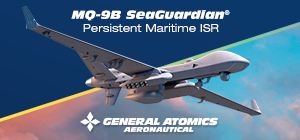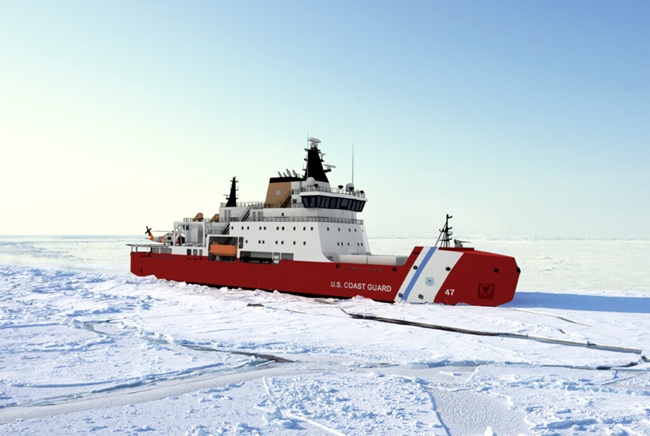
On October 9, President Donald J. Trump signed a Presidential Memorandum to authorize the construction of up to 4 Arctic Security Cutters (ASCs) abroad, partially waiving the requirement that all US Coast Guard vessels must be built in the USA.
This measure, taken “to address urgent national security needs in the Arctic region”, has allowed the signing of a Memorandum of Understanding with Finland to construct the first 4 Arctic Security Cutters in Finnish shipyards, and to leverage Finnish expertise in the build of “up to 7” other ASCs in shipyards located in the United States.
Finland was represented at the White House by its President, Alexander Stubb, who signed the MoU.
The ACSs will not all be built to the same design, but to 2 different types.
The Davie Multi-Purpose Polar Support Ship (MPPS) 100 (picture below), unveiled last May, is a 4th generation icebreaker design which should be built in a total of 5 examples: 2 are to be built at Helsinki Shipyard in Finland, with 3 more to follow from Davie’s recently purchased facility in Galveston, Texas.
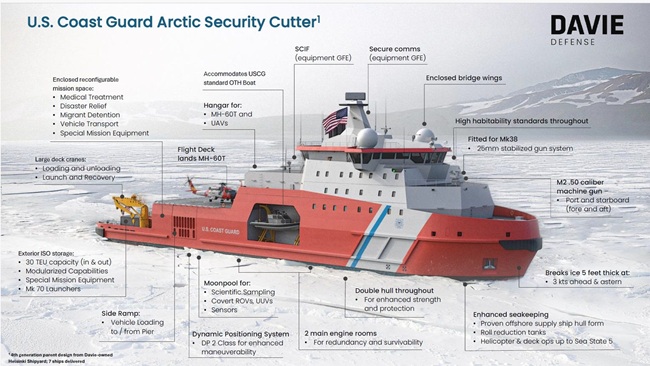
The “100” represents (roughly) the length of the vessel in meters (99.9 m), for a displacement of 9,000 tons. It’s a vessel in ice class PC3, able to break through 5 feet (1.5 m) ice at 3 knots speed.
It has a deck and hangar suitable for MH-60 class helicopter plus drones, and a mix of covered and uncovered work spaces of 650 m2 that can embark up to 30 TEU containers with various mission payloads. It also has a moonpool for the launch and recovery of underwater vehicles and can deliver a bollard pull of 150 tons. It could be armed with guns up to 57 mm.
Rauma Marine Constructions, a Finnish firm, will build another pair of icebreakers, but these will be Multi-Purpose Icebreakers (MPI, pictuire below) as designed by Aker Arctic Technology originally for Canada’s own Coast Guard, which plans to acquire 16 of these vessels with the construction to start in 2027 at the Seaspan shipyard in Vancouver, British Columbia, Canada.
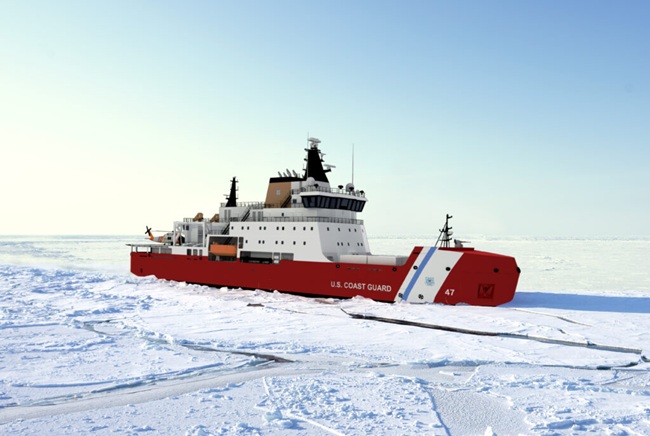
In the US, the MPI will be delivered by an industrial team led by Bollinger Shipyards, in partnership with the already mentioned Rauma Marine Constructions, Seaspan Shipyards, and Aker Arctic Technology Inc.
It must be noted that there is some lingering confusion on the exact distribution of the work, as Bollinger, in its own press release, says that “the first 3 vessels will be built simultaneously by Rauma in Finland and Bollinger in the United States, with production of the remaining 3 vessels to be built in the United States. Delivery of the first 3 vessels is expected within 36 months of the contract award”.
Elsewhere, we are told 2 ships are to be built in Finland, so one of the aspects to be cleared in the contract negotiations now to begin will be the exact nature of the “simultaneous build” of the first 3 hulls between US and Finnish yards.
The MPI has a smaller crew (50 versus up to 124) and is a PC4 class icebreaker capable of going at 4 knots in 1-meter ice (upgradeable to PC3, however, so maybe that will change in the US production run). The flexible mission space for the embarkation of containers is smaller, 345 m2, and is all on the bow, unlike on the MPPS.
Thanks to the involvement of experienced Finnish yards, the first ships should arrive in the US already in 2028. However, the actual contracts have yet to be negotiated and signed and Davie, in its own press release in finnish, struck a cautious note saying that the exact details of the program and its economic/work impact will depend on the outcome of the negotiations now beginning.
At the moment, the US Coast Guard is down to just 3 icebreakers, against a minimum need of at least 9 vessels. The lone ship classed as Polar Security Cutter (heavy icebreaker) is the POLAR STAR (picture below), which was built all the way back in 1976. Its Arctic Security Cutter (medium icebreaker) is the HEALY, commissioned in 1999. The third vessel, the STORIS, was commissioned in August in Alaska and is a commercial vessel previously known as motor vessel AIVIQ. It was acquired in 2024. Belonging to the “medium” class of icebreakers, it is classed as Arctic Security Cutter. However, due to its origin, it does not quite meet the requirements and multi-role capability expected of the “true” ACS.
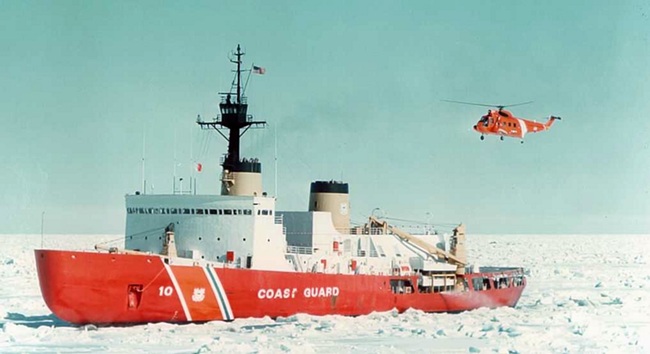








.png)
